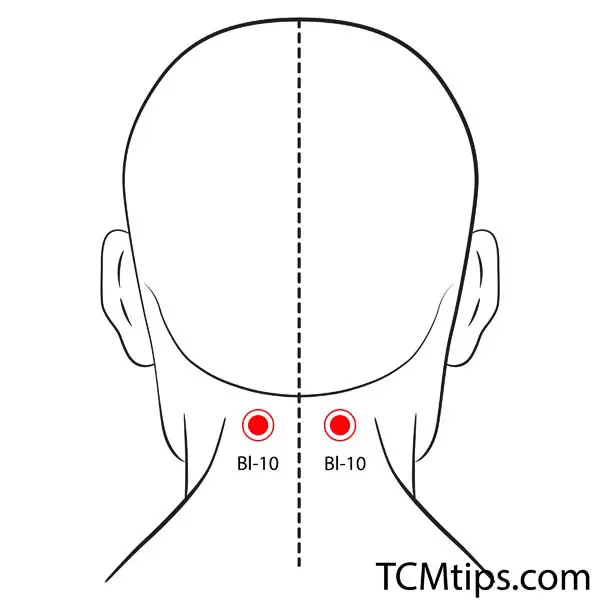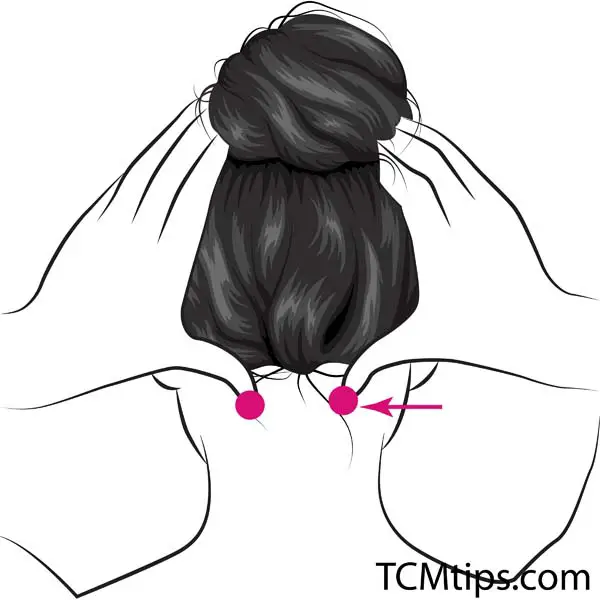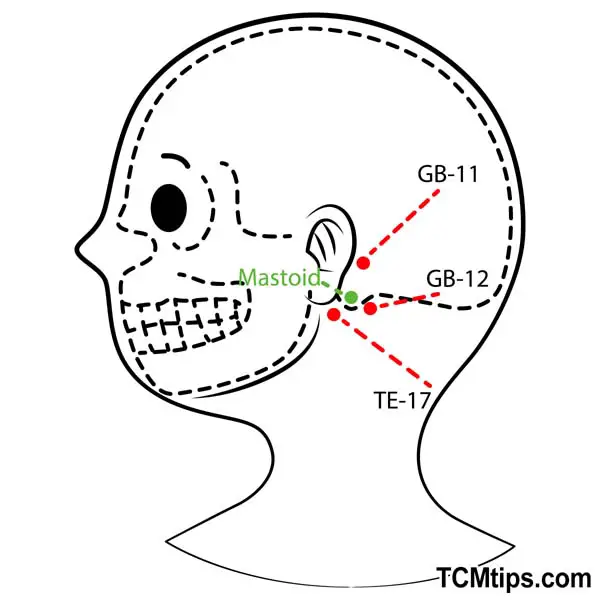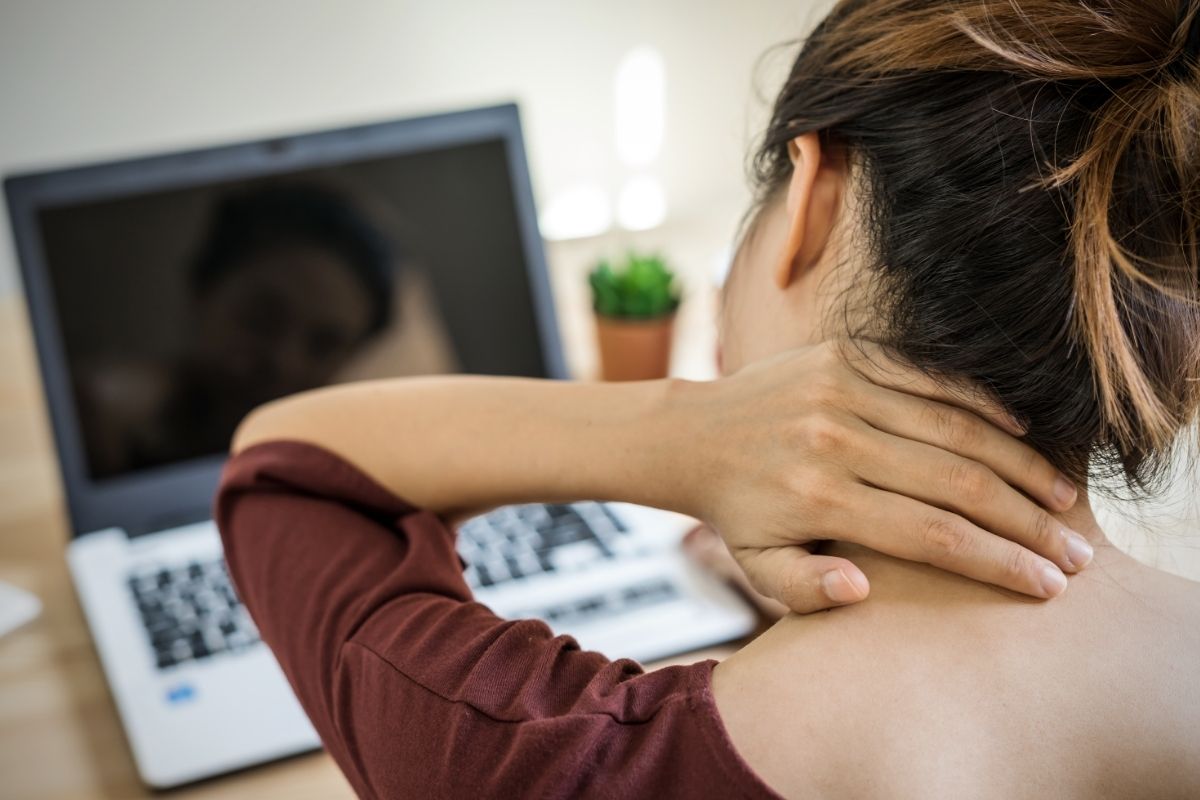From personal experience, I know that chronic neck pain is one of the most cumbersome and frustrating conditions to experience. However, I found that my discomfort was seriously relieved after using an acupuncture pen to provide a holistic neck pain treatment.
If you want to harness the power of acupuncture treatment from the comfort of your own home, learn how to use an acupuncture pen for neck pain here.
Acupuncture Pen For Neck Pain – What Not To Do
Both acupuncture and acupressure are traditionally done by licensed practitioners who spend years in training. When you are practicing at home with an acupuncture pen, it is important that you are aware of the things we should never do.
There are pressure points in the neck where you can apply deep pressure to safely. However, areas like the carotid artery should never be pressed strongly.
You should also be aware that after you eat, blood is drawn to your digestive system. This can make using the acupuncture pen dangerous on any part of your body. It is best to wait for at least 30 minutes after eating to start your treatment.
4 Acupoints To Use Your Acupuncture Pen On To Relieve Neck Pain
To use your acupuncture pen for neck pain, you will want to locate one of the following 4 acupoints and massage it in a circular or up-and-down motion. Be careful not to put too much pressure around the ear or on the carotid artery.
Acupoint: SI-17 (Other Names: Small Intestine-17/Tian Rong/Heavenly Appearance)

SI-17 is one of the most powerful pressure points in the neck.
It can be found under the ears, at the top of the thoracic scrotum. This point has long been linked with improving both blood flow around the body and balance. This point is also accessed in acupuncture to treat tinnitus, sore throats, issues in the small intestine, and swelling in the face.
Acupoint: Bl-10 (Other Names: Urinary Bladder-10/Tian Zhu/Celestial Pillar)

The BL-10 can be found on the posterior hairline, in the depression of the outer edge of the trapezius muscle, 2 fingers lateral to the middle of the posterior hairline
Pain in the eyes, shoulders, hips, and head can all be treated by massaging the BL-10 point. Dizziness, headaches, chronic pain, and sore throats are all believed to be relieved by stimulating the BL-10.
Acupoint: GB-20 (Other Names: Gallbladder-20/Feng Chi/Wind Pool)

The GB-20 point can be found under the occiput of the neck, in the depression between the upper outer edge of the trapezius muscle and the upper posterior edge of the sternocleidomastoid muscle. It is one of many acupuncture points for relaxation in this area. If you are suffering from eye pain, nasal congestion, and headaches as well as chronic neck pain then you should consider treating this point.
Acupoint: GB-12 (Other Names: Gallbladder-12/Wan Gu/Mastoid Process)

The final of the pressure points in the neck we are going to talk about today is GB-12. This can be found behind the mastoid.
These 3 acupoints should be massaged in the order we have listed. Start by circling them at the top of the neck before pulling your pen down towards the base on the neck. Repeat until the area feels warm. Do this for all three points.
When the points listed above are massaged in a sequence, you will notice the best results.
Benefits Of Acupuncture Pen For Neck Pain
Clinical trials have shown that both ranges of motion and neck pain intensity could be improved by using acupressure and acupuncture methods alongside physical therapy and occupational therapy over 3 months. 68% of females studied said that they had less need for over-the-counter pain relief drugs after receiving acupressure for neck pain.
Clinical trials are yet to discover why so many people find acupuncture and acupressure so effective. However, many find that by activating pressure points in the neck they can find relief for pain all over their body. If you struggle with restricted movement, check out this article about acupuncture pens for stiff necks.
Acupuncture Pens – Frequently Asked Questions
Are Acupuncture Pens Safe To Use?
Yes, on the whole, acupuncture pens are safe to use and are useful for symptom relief of many chronic conditions, such as chronic pain. However, you should do some research into acupuncture theory before you start using one. A good pen will come with a manual that will explain where you should be using it.
It is also worth mentioning that acupuncture pens are considered to be safer to use than actual acupuncture treatment. This is because actual acupuncture uses acupuncture needles that penetrate the skin, whereas an acupuncture pen uses electronic pulses.
There are also fewer hygiene concerns using an acupuncture pen than there are with traditional acupuncture therapy.
However, if you want to use your pen on your face, around your eyes, and on your neck then you should make sure it has some more gentle settings so you don’t hurt yourself or cause any bruising. Some underlying health conditions may require alternative treatments – so speak to a qualified practitioner before you start treating yourself.
How Often Should I Use My Acupuncture Pen?
You can use your electric acupuncture tool up to 4 times a day in the same area. It is a personal preference as to how often you actually do use it.
If you are injured or in pain then you may want to use it that frequently. However, if you are using it as preventative care then you may find that you only need to use your acupuncture pen a few times a week or once a day.
Do Acupuncture Pens Really Work?
With the huge range of uses and benefits that acupuncture pens boast, you’re likely feeling pretty skeptical about their effectiveness. Although there is little research into the effectiveness of acupuncture pens, the research that does exist is very promising. To learn more, check out this article titled Do Acupuncture Pens Work.
For more in-depth instructions, check out this article titled How to Use an Acupuncture Pen.
 P. Sze
P. Sze 


















